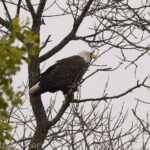“A bird does not sing because it has an answer. It sings because it has a song. ” Chinese Proverb
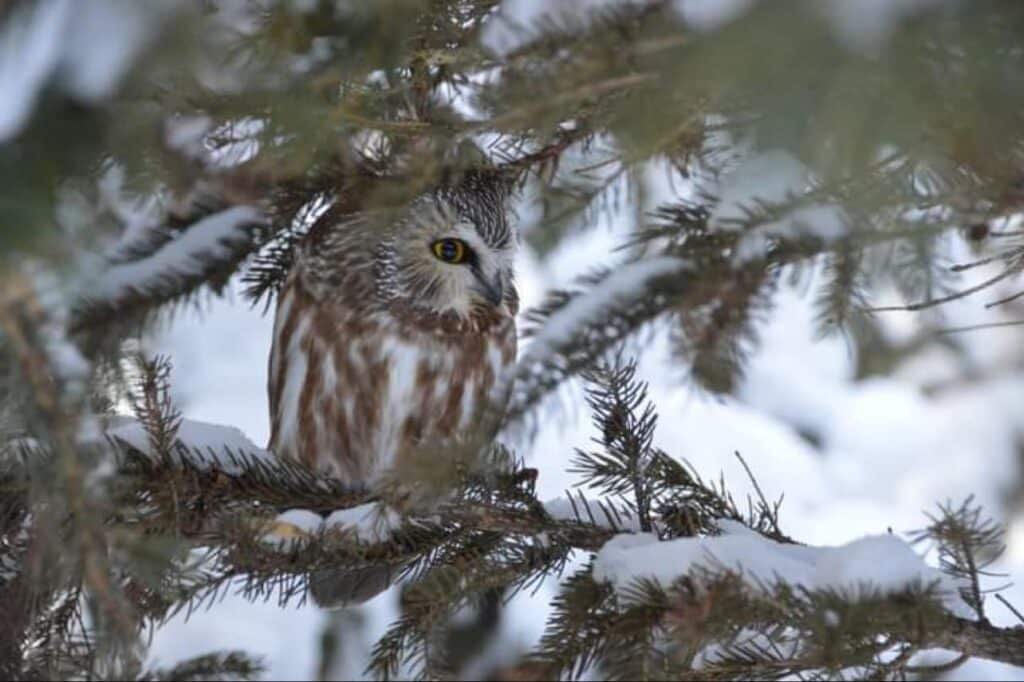
January 23, 2024
Winter in Roseau brings about a unique and serene experience for birdwatchers.
As the landscape transforms into a winter wonderland, it becomes a haven for various bird species that thrive in colder months. If you can take the cold, there is no better time to see birds than in the winter when the trees have lost their leaves and there is less to hide in. Grab your binoculars, bundle up, and let’s explore the enchanting world of winter bird watching in Northwestern Minnesota.
Top Places to Winter Bird Watch in Roseau, County
- Hayes Lake State Park
- Ditch Banks and fields on Hwy 89 and County Roads near farm fields
- Pine to Prarie Trail
5 Commonly Seen Winter Birds in Roseau County
Common Redpoll (Acanthis flammea) or Winter Finches
One of the highlights of winter bird watching in this region is the appearance of the Common Redpoll. These small finches, adorned with a crimson cap on their heads, create a vibrant contrast against the snow-covered backdrop. Look for them in coniferous forests and open fields like the Beltrami State Forest area and open farm fields, where they often gather in flocks adding a burst of color. Other finches that are common in Roseau are the yellow finch which frequents the bird feeders. A common redpoll eats up to 42% of its body mass every day. They harvest seeds from birch, alder, willow, and pine trees but appreciate an easy meal at a feeder.

Snowy Owl (Babo Scandiacous):
- A true symbol of a cold winter region, the Snowy Owl is a majestic bird that occasionally graces Roseau County in the winter months. Their snow-white plumage blends seamlessly into the winter surroundings. Seeing this beauty is a sight to behold. Keep your eyes open when passing open fields and farmland. They often sit on a light poll or high in a tree hunting prey. Last winter, passing traffic was lucky to see the same owl perched on a light pole on Hwy 11 east of Roseau. It was as if it had scheduled arrivals, he came nightly between 4:30-6:00 PM. His view was a stunning sunset to the west and fine dining to the east across the snow-covered field.
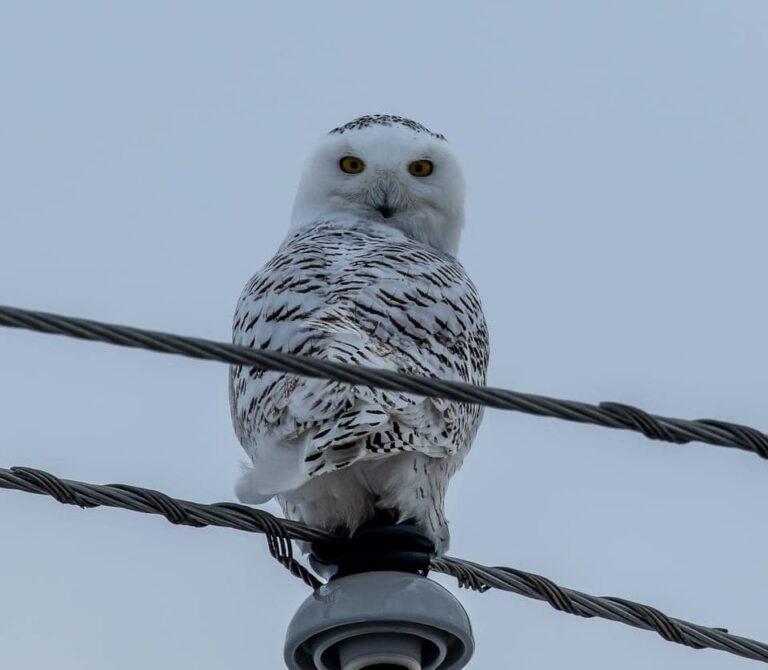
Blue Jays and Pileated Woodpeckers
Blue Jays and Woodpeckers add a brightness of color to the white winter landscapes of Minnesota. The coldest of days seem to be no bother for these birds that can often be seen dining at a suet feeder on the frostiest bitter cold days. The pileated woodpecker is the largest living woodpecker in North America. It is nearly three times taller than the petite Downy Woodpecker. What’s neat about the Blue Jay is the population shift in preparation for the winter cold. The birds you see in the winter may not have been the ones present in the summer months. Some of these Jays will be travelers from northern territories and some of the summer Blue Jays will move a bit south.
Our residents are lucky to have a local professional photographer with a passion for photographing this majestic bird. Heather Morey has shared images that help us understand the bird and bring it up close for rarely-seen viewing.
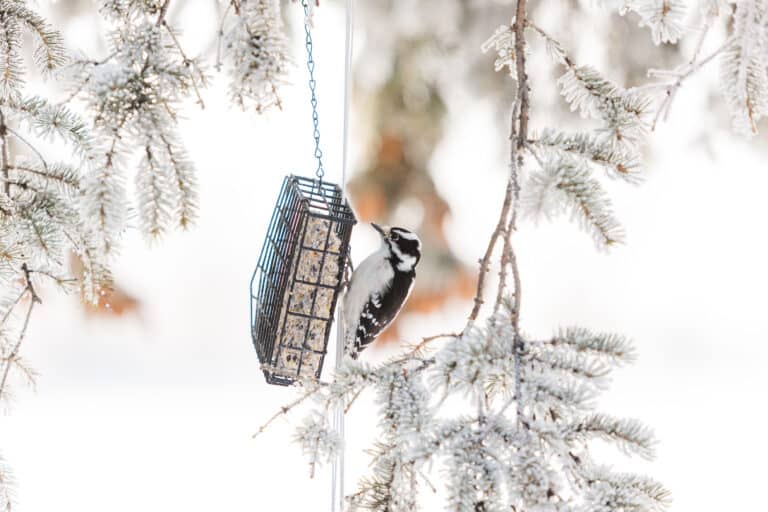
Black-capped Chickadee (Poecile atricapillus)
The resilient Black-capped chickadee is a year-round resident of Roseau County, bringing cheer to birdwatchers even in the coldest months. Recognized by its distinctive black cap, this bird makes a sweet song that sounds like it’s saying its name chick-a-dee -dee-dee. These small birds are a delight to watch flitting around in search of seeds or insects during the summer months. If you have a wooded area with a bird feeder, it is easy to attract these lively characters for your viewing pleasure.
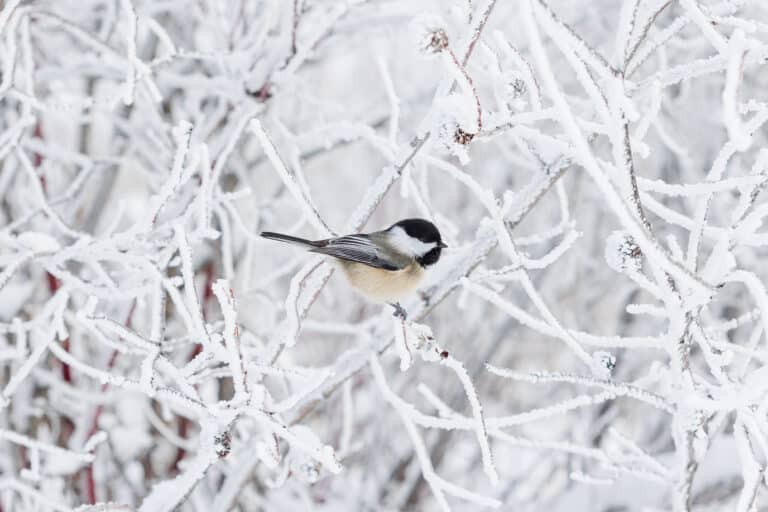
Bald Eagle (Haliaeetus leucocephalus)
Northern Minnesota’s frozen farm fields, lakes, and rivers become prime hunting grounds for the Majestic Bald Eagle during winter. As opportunistic scavengers, Bald Eagles soar through the skies scanning for small prey like rabbits and mice. Often a group of eagles, known as a convocation, can be spotted along the ditch banks dining on frozen road kill like deer. Eagle’s nests can be seen from the rural roads, where their carefully constructed homes stand out from the rare leaved trees. These nests can measure 5-6 feet wide and 2-4 feet deep. Witnessing the impressive wingspan of these iconic birds against a wintry backdrop is a breathtaking experience that epitomizes the beauty of winter bird watching.
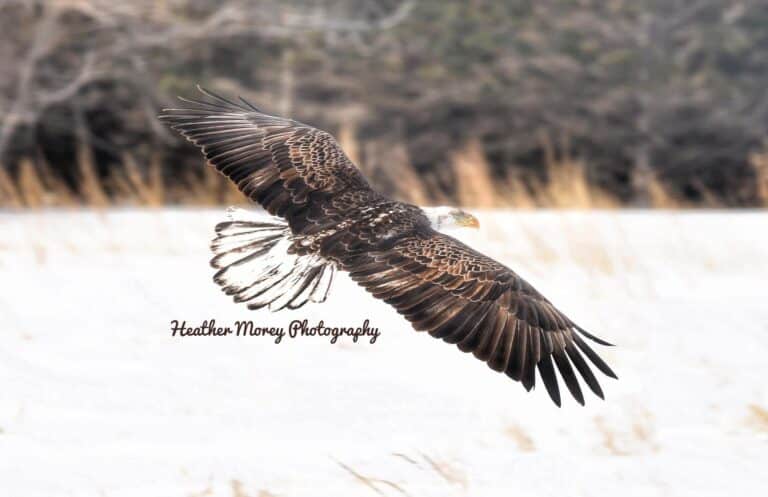
Minnesota Bird Fun Fact for the Birdwatcher
The yellow finch that lives in Minnesota year-round can often be missed in winter months. The male bird who is yellow molts its feathers in the winter for better camouflage making it resemble a close likeness to the more drab female bird. Making many birdwatchers think the yellow finch is missing in action.
And when we are discussing winter birds, we cannot leave out the partridge in the pear tree. It’s more like an apple or juneberry tree but they are a fun winter sight.
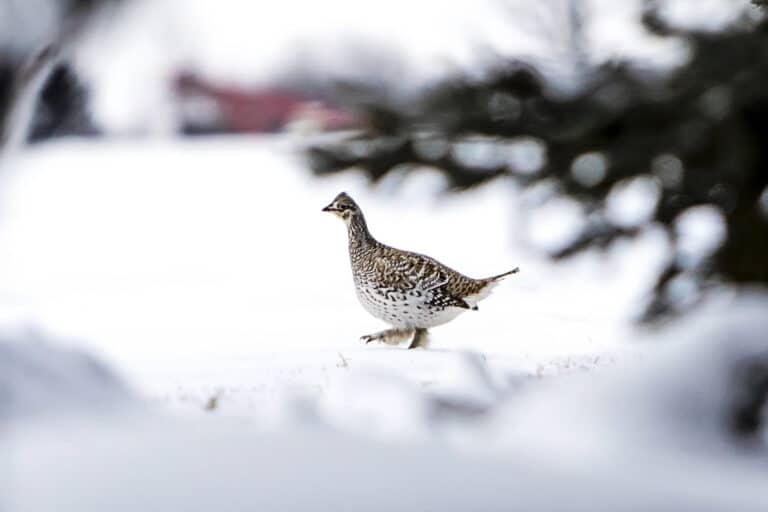
Photo Credit: Nickelle Johnson and Heather Morey

